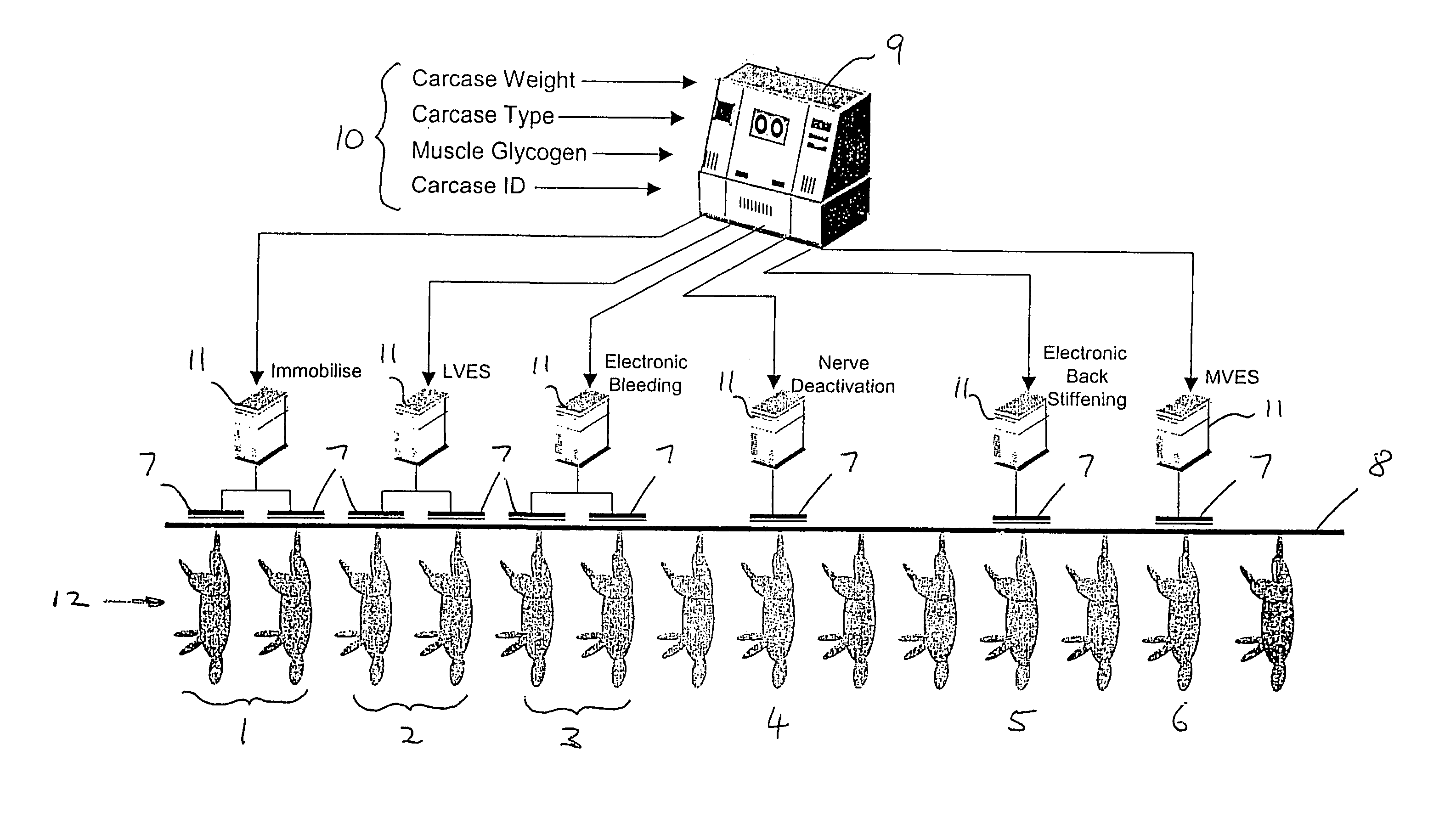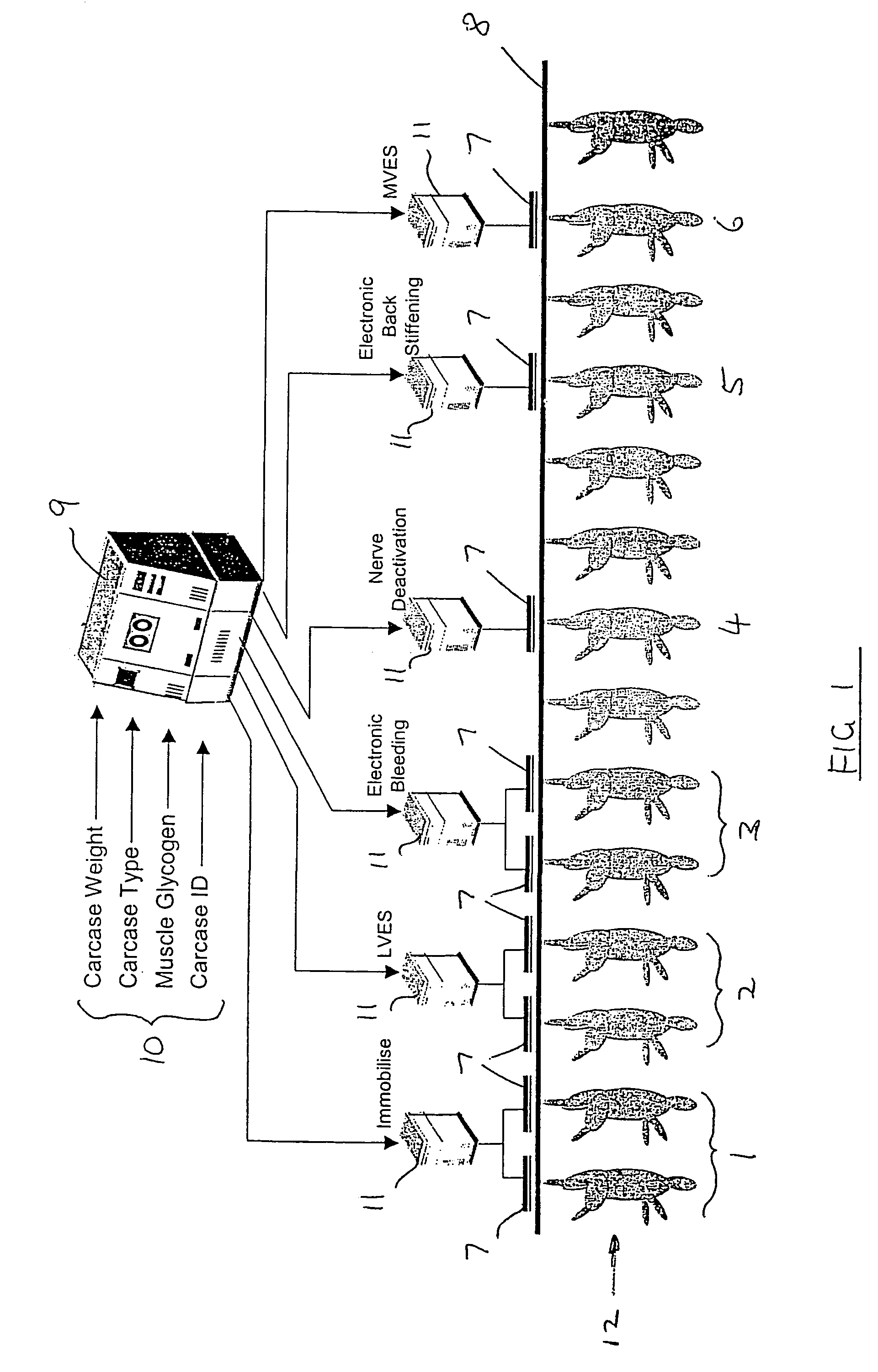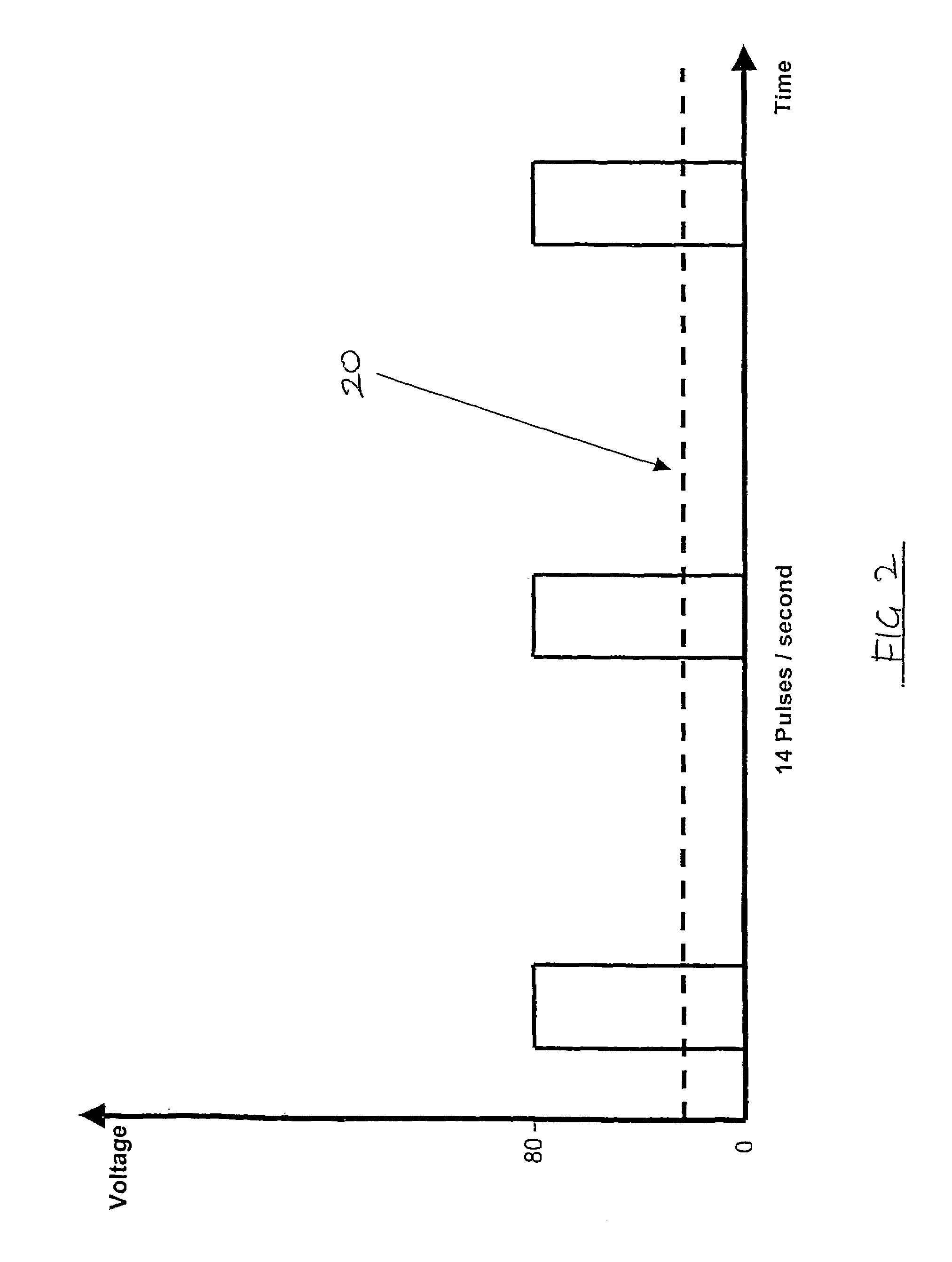Electrical treatment of carcasses
a technology of electric treatment and carcasses, applied in meat tenderising, poultry processing, food science, etc., can solve the problems of downstream processing being more difficult or hazardous for operators, affecting the quality of end products, and affecting the quality of meat. , to achieve the effect of optimizing the quality of mea
- Summary
- Abstract
- Description
- Claims
- Application Information
AI Technical Summary
Benefits of technology
Problems solved by technology
Method used
Image
Examples
Embodiment Construction
[0034]In the preferred form of the invention, electrical activation is applied to meat carcass for example beef, goat or sheep carcass on a slaughterhouse line, but it will be appreciated that the invention can be applied to other forms of animal or bird carcass in various other abattoir type operations.
[0035]An animal (12) to be processed in a slaughterhouse typically passes through a number of processes such as immobilisation (1), low voltage electrical stimulation (2), bleeding (3), nerve deactivation (4), back stiffening (5), and mid voltage electrical stimulation (6) among other processes which may include fat trimming, boning, high voltage electrical stimulation, and other well known processes. It should be appreciated that the processes and situations represented in FIG. 1 are illustrative examples only and do not comprise an actual slaughterhouse line, or would necessarily be used in the illustrated sequence or combination.
[0036]In some processing areas, electrical activatio...
PUM
 Login to View More
Login to View More Abstract
Description
Claims
Application Information
 Login to View More
Login to View More - R&D
- Intellectual Property
- Life Sciences
- Materials
- Tech Scout
- Unparalleled Data Quality
- Higher Quality Content
- 60% Fewer Hallucinations
Browse by: Latest US Patents, China's latest patents, Technical Efficacy Thesaurus, Application Domain, Technology Topic, Popular Technical Reports.
© 2025 PatSnap. All rights reserved.Legal|Privacy policy|Modern Slavery Act Transparency Statement|Sitemap|About US| Contact US: help@patsnap.com



